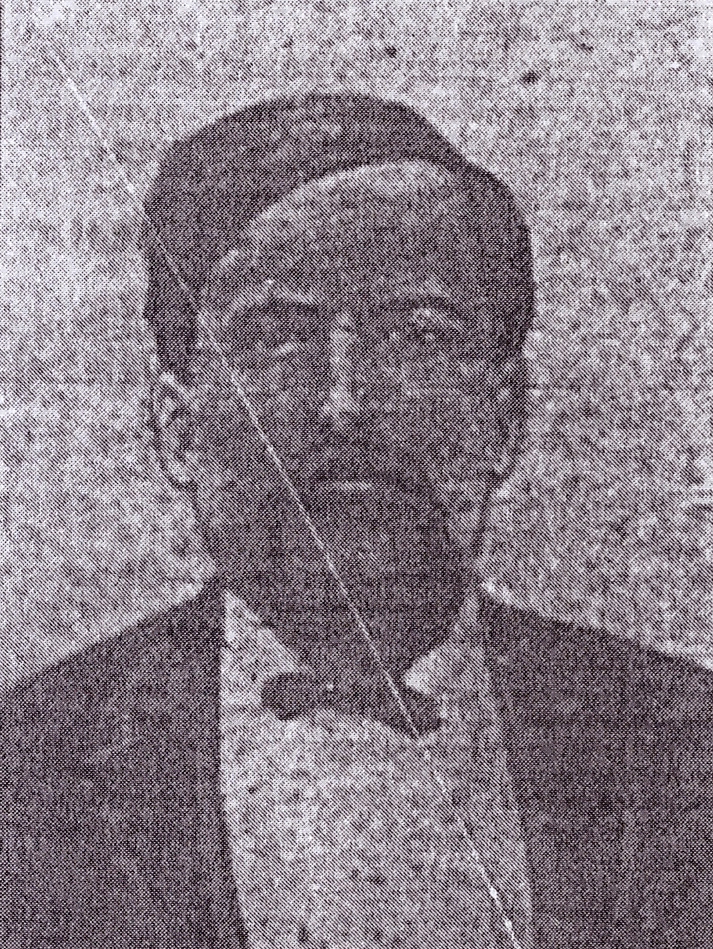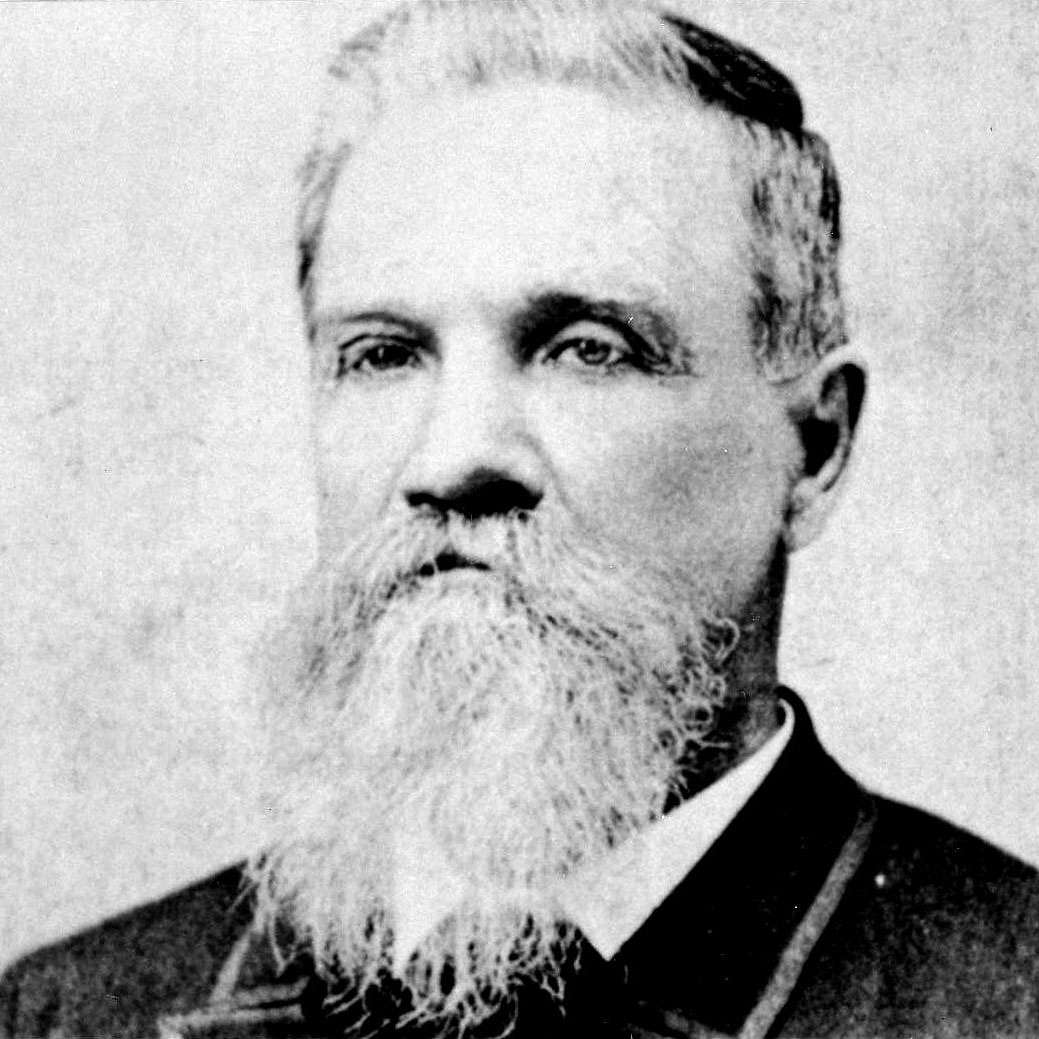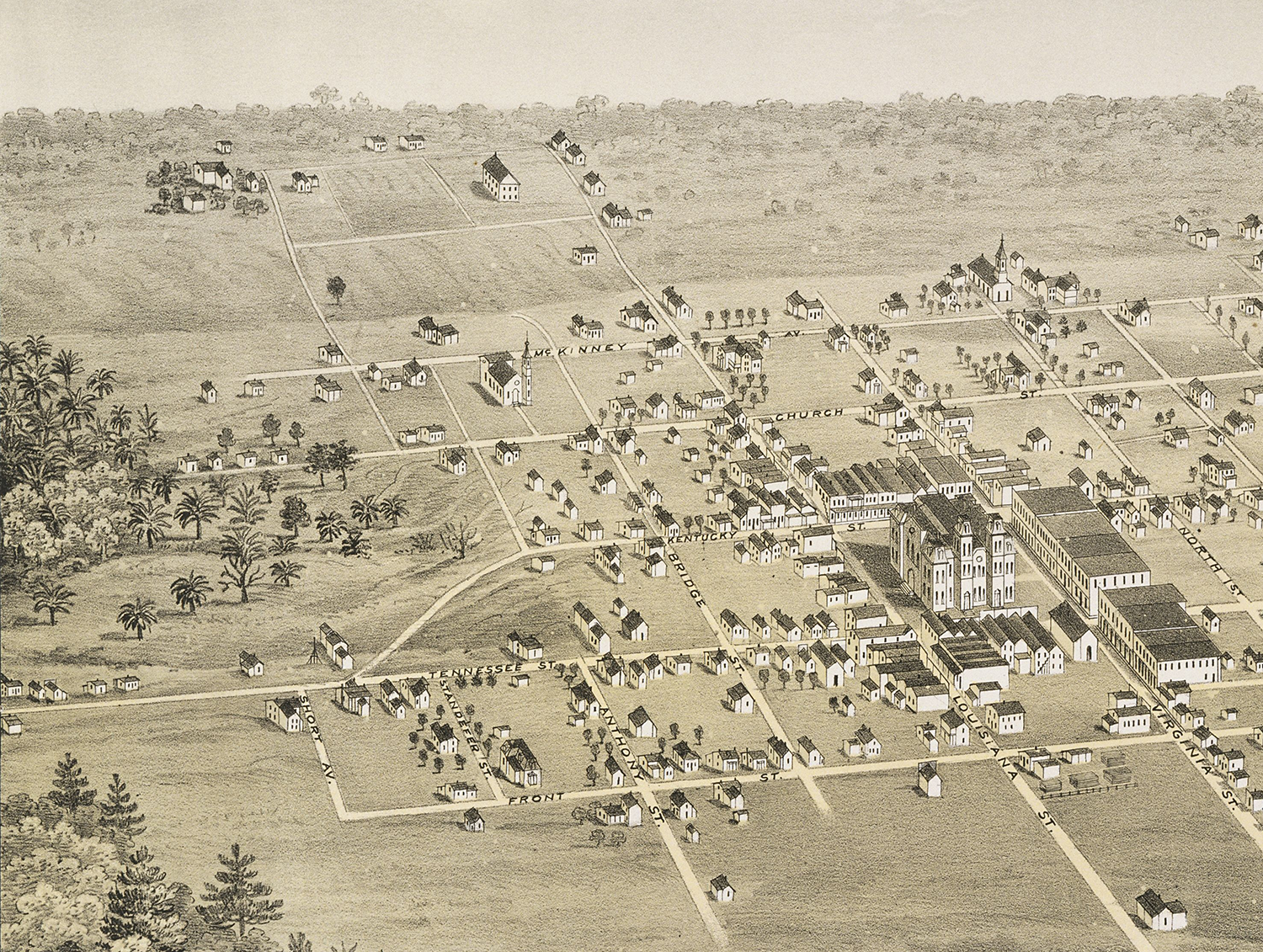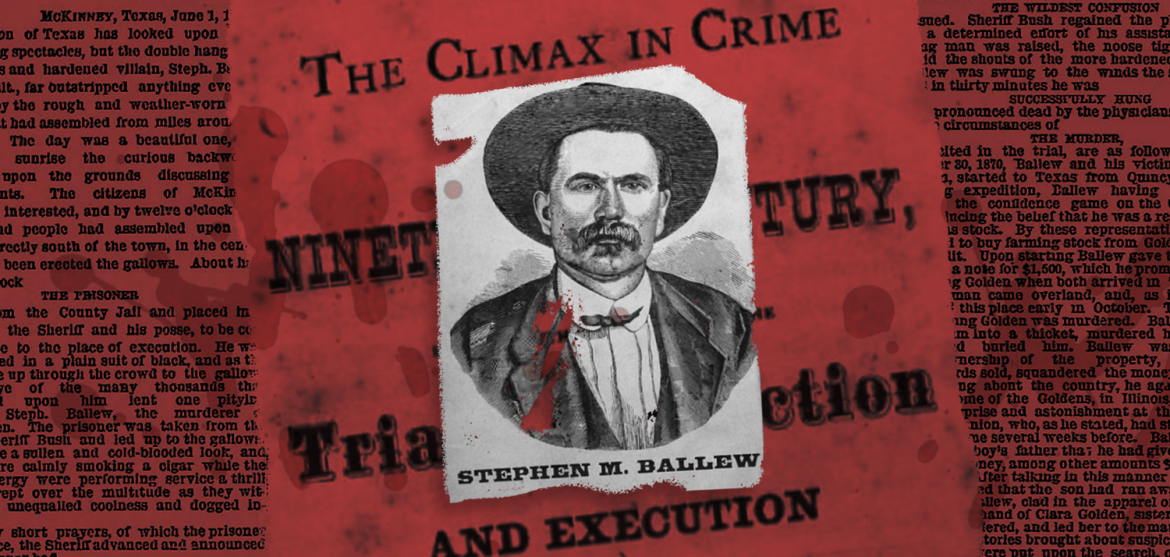“The Inhuman Murderer; the Expert Confidence Operator and the Monster Liar of His Age”
Late in the spring of 1872, several of the men of Plano saddled up their horses and set out for McKinney, to witness the first legal hanging in Collin County.
Facing execution was Stephen Ballew, reviled as “The Inhuman Murderer; the Expert Confidence Operator and the Monster Liar of His Age,” in an 1872 account. The young man had been convicted of murdering James Golden about three miles outside of McKinney. Collin County Sheriff William Nelson Bush, a Plano resident who lived near what is now the intersection of Alma and Legacy, helped bring him to justice.
News of the shocking murder made headlines across the nation. Posing as a rich buyer of horses and mules, Ballew had befriended the family of John Golden, a prosperous farmer in Quincy, Illinois. Ballew charmed them with his fancy clothing and his tales of his adventures as a Confederate soldier. He courted John’s daughter, Clara, plying her with “an ivory penknife, several bolts of fine silk, and wooly French poodle dog,” according to a book of vintage true crime stories. At the Golden family’s invitation, Ballew lived with them for months.
It seems no one could resist Ballew’s charms. Clara consented to marry him. John agreed to loan him several thousand dollars for a business venture in Texas. James decided to go along for the journey. The two young men left the Golden house with a horse and wagon and a large trunk, and eventually traveled to Collin County, where Ballew ostensibly planned to sell the livestock.
While camped about three miles outside of McKinney, Ballew shot young James Golden in back of the head and bludgeoned him with an axe. He buried Golden in a shallow grave.

Ballew then wrote a letter to the Golden family, claiming that the young Golden had stolen all the profits of the venture and disappeared. Mortified, the family welcomed Ballew when he returned to Illinois, alone and supposedly broke. Ballew married Clara in a quiet ceremony, wearing the boots he’d stolen from young James. The elder Golden felt responsible for the trip’s bad end and offered the young couple a farm as a wedding gift.
But then the Goldens began noticing clues that didn’t add up. Ballew was wearing a shirt that belonged to James. He began behaving oddly. As the older Mr. Golden testified:
“Whenever my absent son’s name was mentioned he would always let on he had taken a chill; seemed very nervous and excited whenever my son was mentioned; always wanted a light in his room at night; said he could not rest without a light in his room; would get up in the night and walk the floor and smoke. Before Ballew left with my son, he could rest as well as any of the family.”
Only one person had never succumbed to Ballew’s charms: William Ewing, the Golden family attorney and the county’s district attorney. Suspicious, Ewing did his own detective work. He concluded that James Golden had written his last letter from McKinney and wrote letters to law enforcement agencies in the area, including Sheriff Bush in Plano, asking for news that might shed light on Golden’s disappearance.
When a farmer in McKinney found human remains in his field a few months later, Sheriff Bush answered Ewing’s letters. Sheriff Bush traveled to Illinois to bring Ballew back to Texas for trial.

Collin County’s courthouse couldn’t hold all the spectators for the trial of the “Quincy Fiend,” so it was moved to the First Christian Church. The prosecuting attorney noted the cruelty of Ballew’s crime toward the family. “Because the family had been friends, tried and true, to this prisoner when he was left an orphan, friendless and homeless, we find them today grieving over their murdered son and brother—a distracted and miserable family,” he said. James Golden’s skull and bones were presented to the elder Golden in the courtroom, who identified them by bits of clothing still clinging to the bones.
Stephen Ballew was found guilty and sentenced to be hanged in McKinney’s Finch Park on May 24, 1872. A large crowd of 4,000—most of Collin County, according to newspaper reports—gathered for the hanging.

Fifty years later, the McKinney Courier-Gazette published the reminisces of Josh Herndon, an eyewitness to the hanging. On the morning of the execution, Herndon recalled, Ballew ate a hearty breakfast and rode to the gallows on his coffin while smoking a cigar. He wore a nice suit of clothes, a big white hat and fine shoes he took pains not to muddy as he mounted the gallows. Ballew took off his hat and handed it to Sheriff Bush, saying, “Here, Captain, lay my hat over there.”
“He then went to his death with all the nerve a man could,” Herndon said.
Sheriff Bush pulled the lever at the gallows. “This is one of the many painful duties of your humble servant, though when I accepted the office of Sheriff of Collin County, I accepted this duty and there remains nothing left for me to do but to carry out the sentence of the Court,” he told the crowd. “May the God of heaven have mercy upon this poor, unfortunate man, is my prayer.” Only one person in the crowd was there to mourn the death of Stephen Ballew—his bride, Clara.

After the hanging, Bush and the other men from Plano men headed home from McKinney. A terrible thunderstorm broke out. Accounts described it as the one of the worst ever recorded, with hailstones so large they killed calves grazing on the prairie.
On that last, violent note, the terrible tale of Stephen Ballew came to an end.
Read more spine-chilling stories in Mary Jacobs’ book, “Haunted Plano” (History Press, 2018), available at Amazon, Barnes & Noble and HistoryPress.com.
And explore more of Plano’s spooky history on the virtual Apparition Expedition Oct. 16-17. Purchase your ticket here.





